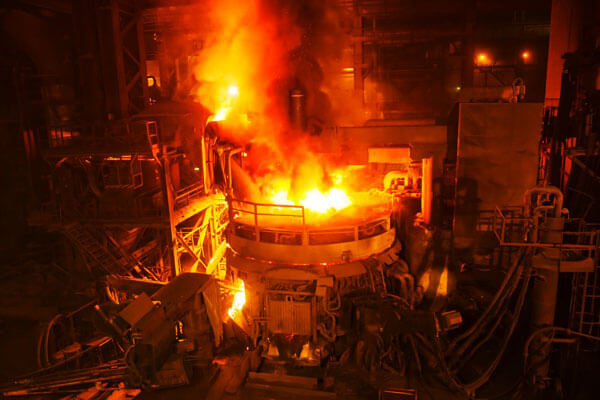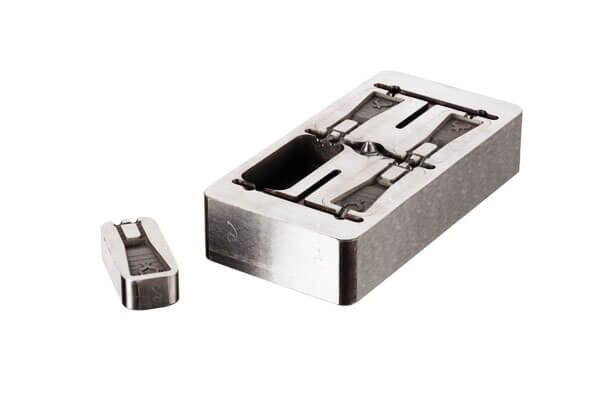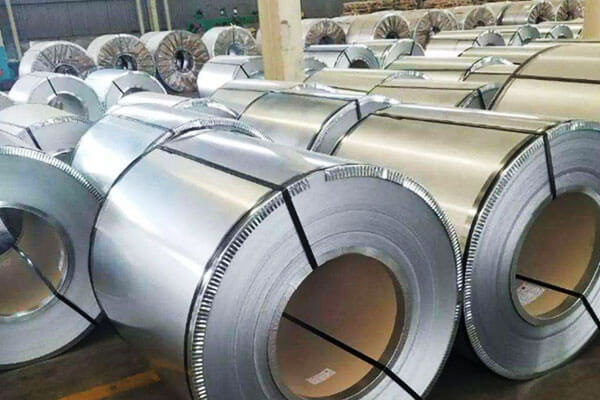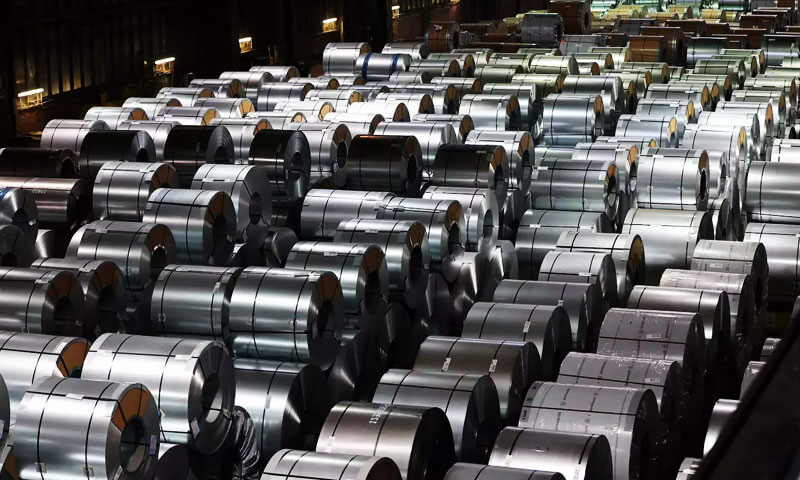導入
で 1889, at the Paris World Exposition, a towering steel structure stunned the world—the Eiffel Tower.
Composed of 18,038 wrought iron components, this engineering marvel not only symbolized the pinnacle of structural innovation but also marked humanity’s official entry into the Steel Age.
From the framework of skyscrapers to the intricate components of medical devices, steel has permeated every aspect of modern civilization with its irreplaceable role.
Beyond shaping industrial development, it has been a driving force behind global infrastructure expansion and technological progress.
This article delves into the scientific nature of steel, its manufacturing techniques, industrial evolution, そして将来の傾向,
revealing how this essential material continues to define the boundaries of human civilization.
1. A Historical Review of Steel
Human exploration of steel dates back to 1800 BCE in Anatolia, but the true industrial revolution began in the 19th century.
で 1856, Henry Bessemer invented the Bessemer converter, which increased steel production efficiency twentyfold,
directly accelerating the rapid development of railways, 造船, and mechanical engineering.
By the 20th century, the widespread adoption of continuous casting technology further improved production efficiency, 材料廃棄物の減少, and enhanced product quality.
In the 21st century, the global steel industry has undergone significant transformation.
China has emerged as the dominant force, 会計 53.9% of global crude steel production in 2023.
At the same time, tightening environmental regulations and carbon neutrality goals are pushing the industry toward low-carbon and intelligent manufacturing.
A review of steel’s development history shows that each technological breakthrough has dramatically expanded its applications,
allowing steel to penetrate beyond traditional construction into aerospace, 医療機器, and renewable energy sectors.
2. Steel Manufacturing Processes
Modern steel production is a highly sophisticated industrial system that integrates material science, engineering precision, 環境の持続可能性.
Its core stages include raw material selection, smelting, 精製, と形成, as well as sustainable and circular economy practices.
Raw Materials & 抽出
The quality of iron ore, coking coal, and alloying elements determines the final properties of steel.
例えば, high-purity iron ore with a high Fe content significantly reduces impurities, enhancing mechanical strength and corrosion resistance.
のように 2024, global iron ore production has reached 2.2 billion tons, with resource distribution
and extraction costs playing a crucial role in shaping the competitive landscape of the steel industry.
Ironmaking & Steelmaking Processes
Modern steel production primarily relies on 爆発炉 (BF), direct reduced iron (DRI), そして basic oxygen furnaces (bof).
DRI technology has become an essential method for green steel production, as it reduces carbon emissions by 30% compared to traditional blast furnaces.
さらに, 電気弧炉 (EAF), which utilize recycled scrap steel, 持っている increased their global production share to 28%,
significantly lowering energy consumption and contributing to a more sustainable production model.

精製 & シェーピング
Once molten steel undergoes secondary refining, it is processed through continuous casting and rolling to produce high-precision materials
のような ultra-thin stainless steel sheets そして aerospace-grade high-strength steel.
Advanced cooling control techniques improve grain structure and fatigue resistance, making steel products more suitable for extreme environments.
持続可能性 & 循環経済
Steel recycling is a cornerstone of modern industry sustainability.
Every ton of recycled steels prevents the emission of approximately 1.5 tons of CO₂, significantly reducing the industry’s carbon footprint.
Currently, the global steel recycling rate has reached 85%, reinforcing the transition toward greener and more efficient steel production.
3. Classifying Steel: Types and Their Unique Characteristics
Steel stands as one of the most versatile materials in modern engineering, and its endless adaptability stems from the precise control over its chemical composition.
By varying the carbon content and adding different alloying elements, manufacturers create steels with unique properties tailored for specific applications.
炭素鋼
炭素鋼 serves as the foundation for countless applications due to its balance of strength and ductility.
Its properties primarily depend on the carbon content, which typically ranges from 0.05% に 2.0%.

低炭素鋼 (軟鋼):
- 特性: Contains less than 0.3% 炭素, making it highly malleable, easy to form, and weldable.
- アプリケーション: Used extensively in automotive bodies, 構造ビーム, and consumer goods where high strength is not the primary concern.
- データポイント: Low-carbon steel often exhibits a yield strength of around 250–350 MPa,
making it ideal for applications where moderate strength and excellent formability are required.
中炭素鋼:
- 特性: With carbon content between 0.3% そして 0.6%, this steel offers an enhanced strength profile and improved wear resistance, although its ductility decreases.
- アプリケーション: Often used for automotive components like gears and shafts, as well as in the manufacture of railway tracks.
- データポイント: Typical tensile strengths range from 400–600 MPa, providing a balance between strength and ductility.
高炭素鋼:
- 特性: Contains between 0.6% そして 2.0% 炭素, resulting in increased hardness and wear resistance, though it sacrifices ductility.
- アプリケーション: Ideal for cutting tools, スプリング, および高強度ワイヤ, where durability under stress is critical.
- データポイント: High-carbon steels can achieve tensile strengths over 800 MPa after appropriate heat treatment, making them perfect for heavy-duty applications.
合金鋼
合金鋼 enhances the basic properties of carbon steel by adding elements such as manganese, クロム, ニッケル, とモリブデン.
This customization allows for tailored performance attributes like improved toughness, 耐熱性, および腐食抵抗.

低合金鋼:
- 特性: Typically includes small percentages (まで 5%) of alloying elements that boost strength without a significant loss in ductility.
- アプリケーション: 構造アプリケーションで使用されます, パイプライン, and automotive parts where high strength and moderate toughness are necessary.
高合金鋼:
- 特性: Incorporates a higher proportion of alloying elements to deliver superior performance,
including enhanced wear resistance and the ability to withstand extreme temperatures. - アプリケーション: Common in the aerospace and power generation sectors, where materials must endure harsh environments.
- データポイント: Certain high-alloy steels exhibit yield strengths exceeding 600 MPa and are engineered to resist deformation even at temperatures above 600°C.
ステンレス鋼
ステンレス鋼 distinguishes itself by its excellent corrosion resistance, achieved by incorporating at least 10.5% chromium into the alloy.
The chromium forms a passive layer of chromium oxide on the surface, protecting the material from rust and environmental degradation.

オーステナイトステンレス鋼:
- 特性: 非磁性, 腐食に対して非常に耐性があります, and noted for its excellent formability and weldability.
- アプリケーション: Widely used in kitchen appliances, chemical processing equipment, および医療機器.
- データポイント: のような成績 304 そして 316 stainless steel frequently demonstrate a tensile strength in the range of 500–750 MPa,
combined with outstanding corrosion resistance in diverse environments.
マルテンサイトステンレス鋼:
- 特性: Offers higher hardness and strength compared to austenitic types, though it is less corrosion-resistant and more difficult to weld.
- アプリケーション: Commonly found in cutting tools, 手術器具, and high-wear environments.
- データポイント: Typical hardness values can reach up to 600 熱処理後のHRC, making them suitable for high-performance applications.
フェライトステンレス鋼:
- 特性: Magnetic and less ductile than austenitic stainless steel but offers good resistance to stress corrosion cracking.
- アプリケーション: Utilized in automotive exhaust systems and industrial equipment that requires moderate strength with good corrosion resistance.
デュプレックスステンレス鋼:
- 特性: Combines the best of austenitic and ferritic stainless steels, offering high strength and improved resistance to corrosion and stress corrosion cracking.
- アプリケーション: Ideal for chemical processing, オフショア構造, および海洋アプリケーション.
- データポイント: Duplex steels often boast yield strengths between 550–750 MPa, significantly outperforming many austenitic steels in terms of strength.
Tool and High-Speed Steels
ツール鋼 そして 高速鋼 are specialized alloys designed for the manufacture of cutting tools, 死ぬ, とカビ.
They require exceptional hardness, 耐摩耗性, and the ability to retain strength at high temperatures.

工具鋼:
- 特性: Formulated with tungsten, モリブデン, バナジウム, and cobalt, these steels excel in hardness and durability under extreme conditions.
- アプリケーション: Employed in the production of hand tools, 死ぬ, and other precision tooling required for high-pressure applications.
- データポイント: Some tool steels achieve hardness levels exceeding 65 HRC, making them capable of enduring prolonged use without significant wear.
高速スチール (HSS):
- 特性: Known for its ability to maintain hardness even at high temperatures, HSS is critical for high-speed machining and cutting applications.
- アプリケーション: Frequently used in drill bits, end mills, and other cutting tools in manufacturing processes.
- データポイント: High-speed steels typically sustain operating temperatures up to 600°C while retaining their cutting performance, thereby increasing production efficiency.
4. Unpacking Steel’s Physical and Mechanical Properties
このセクションで, we break down the essential physical and mechanical properties of steel, highlighting how these characteristics drive its diverse applications.
物理的特性
Density and Weight
- Steels boasts a density of approximately 7.85 g/cm³, which strikes an excellent balance between robustness and manageability.
This optimal density enables engineers to design structures that support heavy loads without incurring excessive weight. - 例えば, when constructing bridges or high-rise buildings, steel’s density allows for significant load-bearing capacity while maintaining structural efficiency.
Melting Point and Thermal Stability
- With a melting point that typically ranges between 1,370°C and 1,510°C, steel withstands extreme temperatures with ease.
This high melting point ensures that steels components remain stable even in high-heat environments such as turbine engines or industrial furnaces. - さらに, the thermal stability of steel is critical in applications like automotive components and power plants, where consistent performance under heat is essential.
熱伝導率
- Steel generally exhibits a thermal conductivity around 50 w/m・k, which allows it to effectively transfer heat.
This property makes steel an ideal choice for applications that demand efficient heat dissipation, such as heat exchangers and engine parts. - 加えて, effective thermal conductivity helps minimize hotspots during high-speed machining and industrial processing.
熱膨張係数
- Steel’s coefficient of thermal expansion, 約 11-13 µm/m・°C, ensures that it maintains dimensional stability under varying temperature conditions.
This stability is particularly important in precision engineering and construction, where even minor distortions can compromise structural integrity.
磁気特性
- Steel’s inherent ferromagnetic properties allow it to be easily magnetized.
This attribute proves invaluable in the design of electric motors, トランス, and various electronic components, where controlled magnetic behavior is essential.
機械的特性
引張と降伏強度
- Steel stands out for its impressive tensile strength, which can range from 400 MPa to over 800 MPa after advanced heat treatments.
This strength enables steels to support massive loads, making it indispensable in large-scale construction and heavy machinery. - さらに, the yield strength, 通常 250 MPAと 350 MPa for common structural steels,
ensures that steel components resist permanent deformation under high stress.
High-strength alloys may even surpass 500 MPA, meeting the rigorous demands of aerospace and automotive applications.
延性と靭性
- Steel’s ability to deform under tensile stress without fracturing – known as ductility – proves vital in absorbing energy during impacts.
例えば, advanced high-strength steels in automotive frames can absorb impact energies up to 120 kJ/cm³, thereby enhancing passenger safety. - 加えて, toughness—the capacity to withstand shock and vibration—ensures that steels can endure repetitive stress cycles,
which is critical for applications in bridges, railways, と機械.
疲労抵抗
- The cyclic loading that many structures endure requires materials that can resist fatigue over time.
Steel’s excellent fatigue resistance guarantees that components such as beams and vehicle frames remain reliable even under constant load fluctuations,
thus extending the lifespan of critical infrastructure.
硬度と耐摩耗性
- Steel’s hardness can be significantly enhanced through alloying and heat treatment processes, resulting in improved wear resistance.
This property is crucial for applications such as cutting tools, ギア, とベアリング, where prolonged exposure to friction and stress demands a material that maintains its integrity over time. - Advanced heat treatments and alloying techniques enable certain steels to achieve hardness levels
that not only resist abrasion but also optimize performance in high-speed industrial processes.
Interplay of Properties and Their Impact
Synergistic Strength and Ductility
- The unique combination of high tensile strength and substantial ductility makes steels both robust and flexible.
This synergy allows it to support significant loads while absorbing shocks, which is critical in structures like skyscrapers and bridges.
Optimized Through Alloying and Heat Treatments
- Manufacturers continuously refine steel by adjusting carbon content and adding elements such as chromium, ニッケル, とマンガン.
These enhancements lead to ultra-high-strength steels that can exceed 1 GPa in tensile strength while maintaining enough ductility to withstand dynamic stresses. - さらに, ongoing advancements in heat treatment processes have improved fatigue resistance and overall performance,
ensuring that steels remains at the forefront of engineering materials.
Thermal and Mechanical Synergy
- Steel’s ability to efficiently transfer heat complements its mechanical robustness, enabling it to perform reliably under harsh conditions.
This thermal-mechanical interplay proves essential in applications where materials
must endure both high temperatures and significant mechanical stress, such as in aerospace engines and industrial boilers.
5. Processing and Manufacturing of Steel
The continuous advancement of steel processing technology has significantly enhanced the added value of steel products, enabling higher performance, 耐久性, と効率.
熱処理: Enhancing Strength and Durability
Heat treatment processes play a critical role in modifying the microstructure of steels to optimize their mechanical properties,
硬度など, タフネス, そして耐摩耗性. Common techniques include:
- アニーリング – Reduces internal stress, improves machinability, 延性を高めます.
- 正規化 – Refines grain structure and improves mechanical strength.
- 消光 – Rapid cooling increases hardness and wear resistance.
- 焼き戻し – Adjusts toughness and reduces brittleness after quenching.
例えば, laser quenching technology can increase the surface hardness of gears to HRC60, reducing the wear rate by 70%,
thereby extending service life in high-load applications such as automotive transmissions and industrial machinery.
コールド処理: Improving Precision and Surface Quality
Cold processing methods refine the dimensions and surface finish of steel components, offering superior accuracy and enhanced mechanical properties. Key techniques include:
- コールドローリング – Increases strength and surface finish, commonly used in automotive panels and precision components.
- Cold Drawing – Improves dimensional accuracy and tensile strength, essential for producing fine steel wires and tubing.
- Cold Extrusion – Enhances uniformity and mechanical properties, often used in manufacturing fasteners and structural parts.
と 5-軸CNC加工, the precision of turbine blade manufacturing can be controlled within ±0.005mm,
ensuring optimal aerodynamic efficiency in aerospace and power generation industries.
表面処理: Enhancing Corrosion Resistance and Aesthetic Appeal
Surface treatments provide protective layers that extend the lifespan of steel products, improve wear resistance, and enhance visual appeal. Advanced surface treatment methods include:

- 亜鉛メッキ – Zinc coating protects steel from rust and oxidation.
- クロムメッキ – Increases hardness and provides a sleek, 耐性仕上げ.
- リン酸塩 – Forms a protective layer that enhances paint adhesion and corrosion resistance.
特に, nano-galvanizing technology has revolutionized corrosion protection by extending the anti-corrosion cycle to 50 年 while simultaneously reducing zinc consumption by 60%,
making it an environmentally sustainable solution for infrastructure and marine applications.
Welding Technology: Achieving Strong and Reliable Joints
Steel structures often require advanced 溶接 techniques to ensure durability and load-bearing capacity.
The choice of welding method depends on factors such as material composition, joint design, およびアプリケーション要件. Common welding techniques include:
- アーク溶接 – Versatile and widely used in structural steel fabrication.
- レーザー溶接 – Provides high precision with minimal heat distortion, suitable for aerospace and medical components.
- 電子ビーム溶接 – Ideal for high-strength joints in vacuum environments, commonly used in aerospace and nuclear industries.
イノベーション automated robotic welding そして 摩擦攪拌溶接 (FSW) have further improved joint integrity and manufacturing efficiency,
making complex assemblies more reliable and cost-effective.
精密製造: Achieving Unprecedented Accuracy
Precision manufacturing is crucial in industries that require high-performance steel components with tight tolerances.
The development of advanced machining technologies has revolutionized the manufacturing of complex steel parts. Key techniques include:
- CNC加工 Centers – Enable high-speed, high-precision cutting and shaping.
- ワイヤーEDM (電気放電加工) – Allows for ultra-fine cutting of intricate steels components.
- EDM (電気放電加工) – Enhances precision in hard-to-machine steel alloys.
These cutting-edge technologies have led to unprecedented improvements in the quality and performance of steels products,
enabling their widespread application in aerospace, 医療インプラント, and high-performance engineering.
6. The Global Impact and Applications of Steel
Steel’s influence spans multiple industries, each benefiting from its unique properties:
- 建設とインフラストラクチャ: Steel forms the backbone of modern urban landscapes.
Structural steel supports skyscrapers, 橋, and railways, while reinforcing bars (rebar) provide essential strength to concrete structures.
例えば, the Hong Kong-Zhuhai-Macau Bridge utilized 2 million tons of steel, ensuring a lifespan exceeding 120 years under harsh marine conditions. - Automotive and Aerospace: High-strength steel alloys ensure vehicle safety and fuel efficiency.
航空宇宙, steel contributes to lightweight, durable airframes and engine components that withstand extreme temperatures and pressures. - Manufacturing and Industrial Equipment: From machine tools to heavy-duty industrial machinery, steel’s robustness and versatility make it indispensable.
Its use in precision equipment has transformed production efficiency across the globe. - Consumer and Medical Products: Stainless steel’s corrosion resistance and biocompatibility make it ideal for kitchen appliances, 医療インプラント, および手術器具.
Advanced alloys such as 316LVM provide superior performance in demanding healthcare applications.
7. Current State of the Steel Industry: 包括的な分析
The steel industry is at a turning point, balancing technological progress with sustainability goals while adapting to shifting economic and geopolitical landscapes.
Global Market Overview: The Push for Carbon-Neutral Steel
Countries worldwide are investing in environmentally friendly steelmaking processes.
Sweden’s hydrogen metallurgical test furnace is now operational, targeting zero carbon emissions by 2030.
その間, leading producers are implementing low-emission production techniques to meet stringent global regulations.
Supply Chain Management: Ensuring Stability and Efficiency
Raw material availability, logistics, and international trade policies remain critical factors affecting steel production.
Companies are adopting smart supply chain solutions to enhance stability and efficiency.
例えば, Anshan Iron and Steel’s smart factory, utilizing full-process AI, has achieved a 99.7% defect detection rate, significantly improving production accuracy and reducing waste.
Technological Innovation: The Evolution of High-Performance Steel
Cutting-edge developments are redefining the steel industry:
- Smart factories – AI-driven systems enable real-time monitoring and optimization of production.
- 軽量, 高強度鋼 – Essential for the automotive and aerospace セクター, reducing fuel consumption and improving safety.
- Nanocrystalline steel – While offering strengths above 2 GPA, it is still in early-stage development,
with production costs 40% lower than titanium alloys but facing challenges in large-scale industrial applications.
Climate Change Strategies: Industry-wide Decarbonization Efforts
The steel industry is taking proactive measures to reduce emissions:
- China’s commitment – Plans to lower carbon emission intensity by 18% による 2030 through advanced CCUS and energy-efficient processes.
- Electrification and alternative fuels – The adoption of hydrogen-based steelmaking and expansion of 電気弧炉 (EAF) 生産 are key to achieving net-zero emissions.
8. Future Trends and Challenges in the Steel Industry
As the steel industry evolves to meet global demand, sustainability goals, and technological advancements, it faces both transformative opportunities and significant challenges.
The sector navigates a landscape shaped by innovation, environmental policies, and shifting economic conditions.
Technological Innovation: Smart Manufacturing and High-Performance Materials
の統合 オートメーション, 人工知能 (ai), and smart factories is reshaping steel production.
AI-driven systems optimize production efficiency, 無駄を減らします, and enhance quality control.
の台頭 nanocrystalline steel, boasting strengths exceeding 2 GPA, is revolutionizing high-performance applications,
potentially rivaling titanium alloys in aerospace and advanced engineering.
その間, breakthroughs in 3D printing of steel allow for complex, lightweight designs with superior mechanical properties.
持続可能性イニシアチブ: Decarbonization and Green Production
In response to climate change and carbon reduction targets, the steel industry is actively adopting cleaner production technologies. Key sustainability trends include:
- Hydrogen-based steelmaking – Countries like Sweden are pioneering hydrogen metallurgy, aiming for carbon-neutral steel by 2030.
- Carbon capture, utilization, and storage (CCUS) – China’s steels sector aims to cut carbon intensity by 18% による 2030, leveraging carbon capture and recycling technologies.
- Electric arc furnaces (EAFs) – Growing reliance on EAFs, which recycle scrap steel, reduces energy consumption and emissions compared to traditional blast furnaces.
Competitive Material Landscape: The Challenge of Alternatives
Steel faces competition from emerging materials such as 複合材, アルミニウム合金, and nanomaterials, 特に自動車および航空宇宙産業で.
しかし, steel’s cost-effectiveness, 耐久性, and recyclability continue to make it the backbone of industrial manufacturing.
イノベーション 高強度, lightweight steels are further enhancing its adaptability in structural applications.
Global Market Dynamics: Trade Policies and Economic Shifts
The steel industry is deeply influenced by geopolitical factors, trade regulations, and economic trends:
- Supply chain disruptions – Fluctuating raw material prices and political trade barriers impact global steels production.
- Regional growth – Rapid industrialization in Southeast Asia and Africa is driving increased steel consumption.
- Strategic alliances – Steels producers are forming global partnerships to enhance resource efficiency and market expansion.
9. 結論
Steel not only transformed the physical landscape—from the Eiffel Tower to modern urban skylines—but also reshaped human progress itself.
As the world transitions toward more sustainable and innovative manufacturing processes,
steel continues to evolve, driven by advancements in technology and a relentless commitment to excellence.
Its journey from ancient iron production to modern smart factories encapsulates the spirit of industrial innovation and human ingenuity.
高品質のスチール製品またはスチール製品をお探しの場合, 選択 ランゲ 製造業のニーズに最適な決定です.


